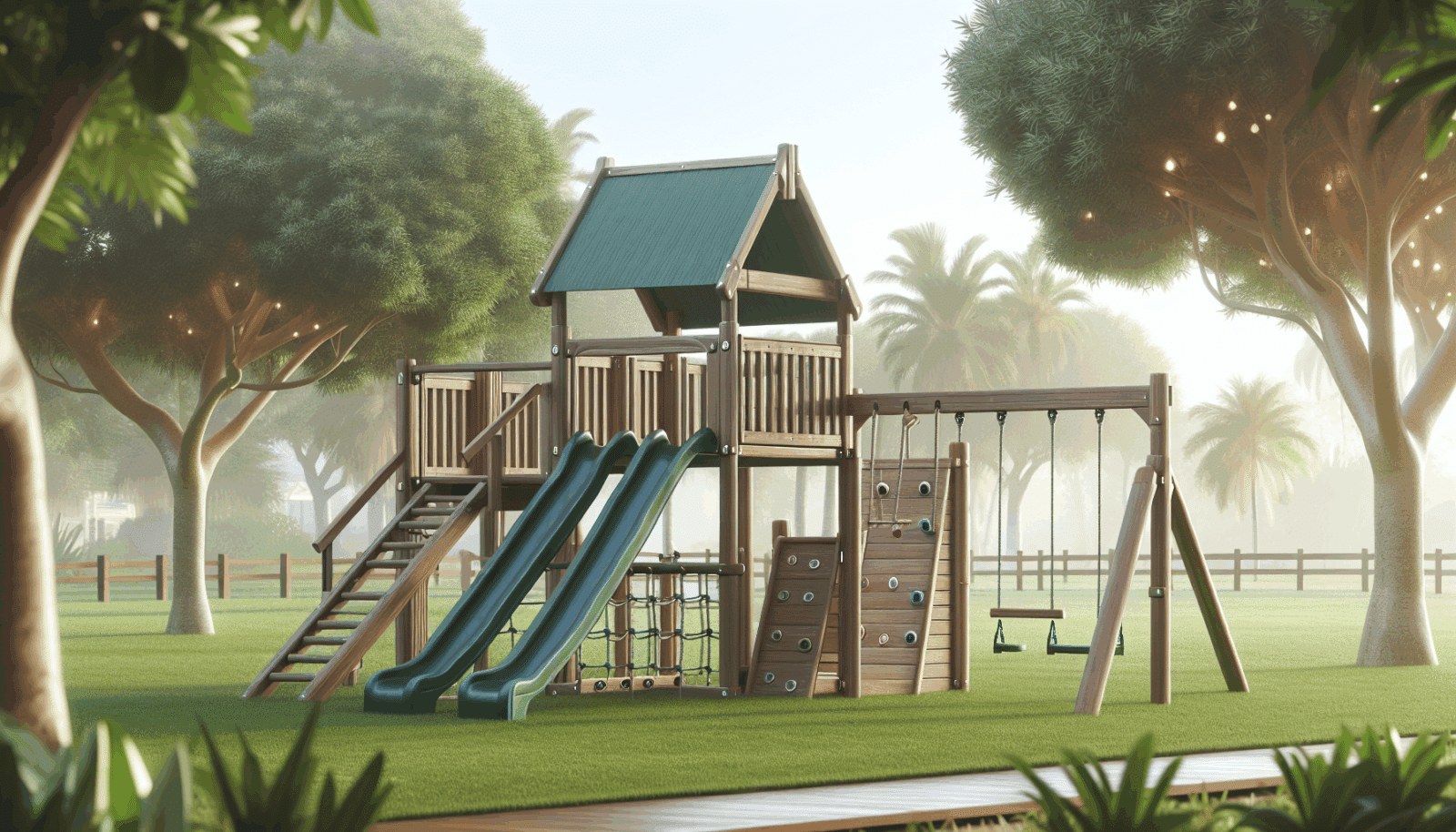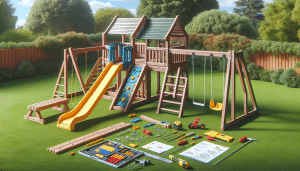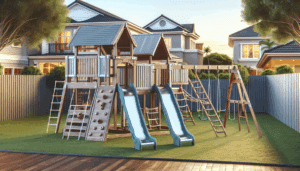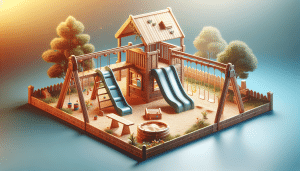Utah Playset Builders are here to ensure that every playset in your local park is assembled with safety in mind. Whether you’re a city planner, park manager, or community volunteer, understanding the ins and outs of safe playset assembly is crucial. We’ve compiled a comprehensive guide to help you tackle this undertaking. Our expert tips and insights will empower you to make informed decisions, ensuring your park’s playsets are both safe and enjoyable for kids of all ages.
Contents
- 1 Choosing the Right Location
- 2 Understanding Equipment Requirements
- 3 Organizing Your Tools
- 4 Creating a Safe Assembly Environment
- 5 Inspecting Components Before Use
- 6 Proper Use of Fasteners
- 7 Ensuring Structural Stability
- 8 Incorporating Safety Surfacing
- 9 Conducting a Safety Checklist
- 10 Regular Maintenance and Inspection
Choosing the Right Location
Selecting the perfect spot for your playset is the foundation of safety. Start by evaluating the ground conditions. Ensure the area is flat and free from debris or hazardous materials. Soft surfaces, such as grass or sand, are ideal to cushion any falls.
Additionally, assess the surrounding environment. Look for low-hanging branches, utility lines, or structures that might pose a risk. Keeping a clear perimeter will ensure children have ample space to play freely. Remember, the location sets the stage for everything that follows.
Understanding Equipment Requirements
Before diving into assembly, familiarize yourself with the equipment’s specifications. This step is critical to avoid missteps that could compromise safety.
Carefully read the manufacturer’s instructions, as they provide necessary guidelines on assembly and maintenance. Keeping these documents handy will be invaluable for reference and troubleshooting. Understanding the capacity and age suitability will also ensure the playset meets the needs of its intended users.
Organizing Your Tools
Preparation is half the battle when it comes to assembly. Gather all necessary tools before starting the project to avoid any interruptions.
Basics like wrenches, screwdrivers, and drills are often required. It’s also wise to have a reliable ladder and safety gear, such as gloves and goggles. Being well-prepared sets the tone for a smooth and efficient assembly process.
Creating a Safe Assembly Environment
Safety isn’t only for play; it’s essential during assembly too. Clear the area of bystanders and unnecessary obstacles to maintain a safe workspace.
Ensure that all team members are briefed on safety protocols. Use caution signs and barriers if necessary, to alert and prevent unauthorized access. Protecting the assembly area from distractions ensures both safety and focus.
Inspecting Components Before Use
A meticulous inspection of all components is essential to guarantee durability and safety.
Look for signs of damage, missing parts, or defects in the equipment. This early detection can prevent future accidents and delays. Replacing faulty pieces before they’re part of the structure maintains the integrity of the playset.
Proper Use of Fasteners
Using the correct fasteners is vital to secure the structure of your playset.
- Choose the right type: Different components require specific fasteners. Ensure you’re using the manufacturer’s recommended options to maintain stability.
- Tighten appropriately: Over-tightening can damage parts, while under-tightening may lead to instability. Balance is key for a secure fit.
- Check compatibility: Some materials require special fasteners. Ensure your choices are suitable for wood or metal surfaces as needed.
- Inspect regularly: Fasteners can loosen over time. Periodic checks and maintenance will prolong the life of the playset and enhance safety.
- Rust-proof solutions: Opt for rust-resistant fasteners to combat weather impacts. This preventative measure maintains integrity and aesthetics.
Ensuring Structural Stability
Stability is the cornerstone of a safe playset. Anchoring the structure securely into the ground is paramount.
Utilize appropriate anchoring systems, such as concrete footings, to prevent the playset from tipping. Regular inspections and adjustments maintain the structure’s firmness over time, ensuring ongoing safety.
Incorporating Safety Surfacing
Having suitable safety surfacing around playsets can significantly reduce the risk of injuries. Options like mulch, rubber tiles, or engineered wood fiber are excellent choices.
These surfaces provide cushioning and are designed to absorb impact. Consistent maintenance of these areas will keep them effective and ready to protect active kids during play.
Conducting a Safety Checklist
A thorough safety checklist is indispensable in ensuring all assembly steps are thoroughly completed.
Include inspections, component verifications, and post-assembly checks in your checklist. This meticulous approach guarantees nothing is overlooked, making the playset ready for safe use.
Regular Maintenance and Inspection
Regular upkeep is vital to extend the life and safety of the playset. Establishing a schedule for inspections helps catch potential issues early.
Look for signs of wear and tear, weather damage, or loose fittings. Prompt attention to repairs keeps the playset safe and enjoyable for everyone who uses it.
Got questions or need help from the pros? contact us at 801-405-3954 or request a free quote today! Your park’s safety is our top priority.




